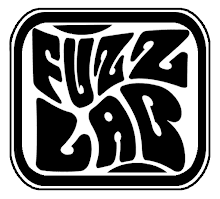1975
This often maligned album is maybe my favorite Purple album. Yeah, I love In Rock and Machine Head, too.They are both monolithic and monumental installments in the history of Rock, but I find myself listening to this album more frequently. This is the Deep Purple Mk IV lineup, consisting of David Coverdale, Glenn Hughes, Ian Paice, Jon Lord and the brilliant Tommy Bolin replacing Ritchie Blackmore on guitar. Many hardcore Purple fans hate this record, because of the absence of Blackmore I think, more than anything else. True enough, it does not sound like the earlier Purple, but why should it? This particular line up had amazing potential. They continued the heavy bluesy riff tradition of before and explored the funk that had been simmering under the surface since In Rock, Fireball and Machine Head. This funkiness was magnified by the addition of Glenn Hughes, whose previous band, Trapeze, played a mean proto funk rock that sounded like the Pat Travers Band, except in 1971 instead of '78 or '79. What Purple Mk IV thankfully did not continue was the classical noodling that, as far as I'm concerned, killed the vibe of many a Purple song. Highway Star is a classic example. Great hard rockin' beast of a song until the ridiculous classical inspired guitar/organ theatrics. C'mon man, keep it rocking. Seriously. Tommy Bolin does just that, and without Blackmore's medeival vibe to egg him on, Jon Lord keeps it rocking too, gettin' funky when necessary. The ultimate tragedy of Purple Mk IV really was the lack balls and/or vision on the part of Coverdale/Hughes/Paice/Lord when it came to playing the older Purple songs that everyone knew on tour. Fearing that they'd lose their fans, they wanted Bolin to play Blackmore's solos verbatim and be simply a Blackmore clone. I think this just beat Bolin down and destroyed the remarkable chemistry and vibe that is on display on Come Taste the Band.
When you first drop the needle on Comin' Home, the opening song on this record, Tommy's presence is announced loud and clear with his trademark echoplex feedback which then busts into a classic Hammond organ driven Deep Purple gallop, sending the message from the get-go: "this is Purple meets Bolin." And a winnning combination it is. The songs have a big bluesy riff, arena rock feel to them, with Coverdale just killing throughout. Most of the songs were penned by Bolin, Coverdale and Hughes. Lady Luck, the 2nd tune, is actually a song from the repetoire of Tommy's earlier band from Colorado, Energy. Gettin' Tighter is a hard groovin' mid tempo monster with a funk breakdown in the middle. The Dealer takes us on a ride to the wrong part of town, with a wicked groove and some mean slide guitar, funky clavinet from Jon Lord, and pure vintage Bolin soloing. I Need Love starts out 70's FM radio rock and then turns into southern fried soul funk. Yeah, seems odd, but works. Drifter is back to the hold-your-lighter-in-the-air arena, big riff rock. More briliant Bolin soloing. Love Child hits hard with an evil Sabbatherian riff and a Herbie Hancock-ish moog solo. Yeah, I know. Again, sounds strange, but is actually really cool. This Time Around, the only ballad of the album, is a vehicle for Glenn Hughes' great vocals., that goes straight into Owed to G(the G is for George Gershwin), a fusion-tinged instrumental workout with more vintage Bolin. The album closes with You Keep on Moving, a dark, moody, Pink Floydesque song with a brilliant Hammond B3 solo from Jon Lord and ending cool dual leads from Tommy.
This album is not super heavy in the metal sense, but it rocks hard throughout. This is "put the eight track in the '69 Charger and hang with your friends on summer vacation" music. It stays true to the riff. The entire bands sounds amazing. Paice's drumming is slammming, Hughes grooves hard, Coverdale, like I said earlier, slays, Jon Lord is tasteful, funky and rockin', and I've already mentioned the larger than life greatness of Tommy Bolin. Stay tuned for some in depth reviews of Tommy Bolin and Energy , either here or on the Wo Fat website.
One thing I absolutely hate, though, is the album cover. Really bad design going on here. Kind of dumb, and, honestly, somewhat disturbing.
And the rating is...
Riff Density - 7
Riff Caliber - 8
Post Blues Factor - 9
Groove Factor - 10
Dig It Factor -10

